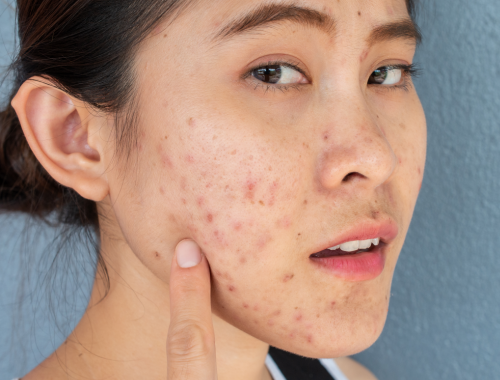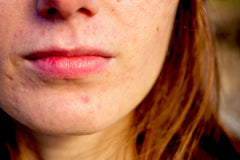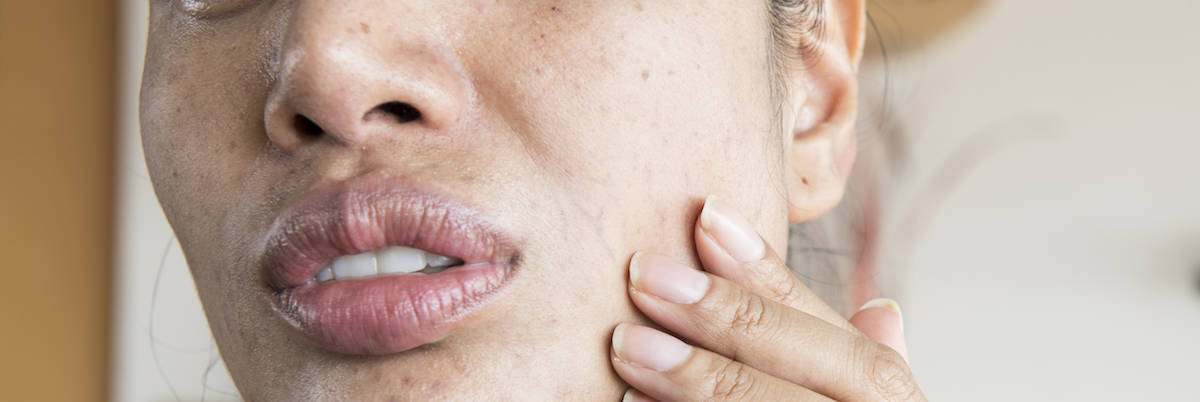
Papules: Reasons, Solutions, and Proactive Measures
Papules are a common skin concern that many people encounter at some point in their lives. These small, raised, and often red or pink bumps on the skin can be bothersome, but understanding what they are, their causes, and how to deal with them is essential for maintaining healthy skin. We'll explore papules in detail and answer some key questions you may have.
What are Papules?
Papules are small, solid, and elevated skin lesions that measure less than 1 centimeter in diameter. They are typically dome-shaped and can be in various colors, including red, pink, or brown. Unlike pustules, they do not contain pus and are not filled with fluid. These skin bumps can occur individually or in clusters and are often associated with various skin conditions, including acne, insect bites, contact dermatitis, and certain inflammatory skin disorders. It's important to note that papules can have different causes and may require specific treatment based on the underlying condition.

Why Do Papules Grow?
Papules grow due to various factors, including inflammation, infection, or underlying skin conditions. Their development is often part of the body's response to several factors.
What Causes Papules?
Papules can be the result of various underlying skin conditions. Some common causes include:
- Acne: Papules can be a common feature of acne, often arising due to inflammation and clogged hair follicles.
- Contact Dermatitis: Allergens or irritants can cause papules to develop in response to direct skin contact.
- Insect Bites: Some insect bites and stings can lead to the formation of papules as part of the skin's natural defense mechanism.
- Skin Conditions: Conditions such as psoriasis, eczema, and lichen planus can cause papules as part of their symptomatology.
- Folliculitis: This is an inflammation of the hair follicles, and it can lead to the development of papules, especially in areas where hair grows. Folliculitis can be caused by bacterial or fungal infections.
- Drug Reactions: Certain medications may cause papules as an adverse reaction. This is more common with certain antibiotics and anticonvulsant drugs.
It's essential to identify the underlying cause of papules to determine the most appropriate treatment.
Is a Papule a Bump?
A papule is a type of bump on the skin. They are typically raised above the skin's surface and can feel firm or solid to the touch.
What Gets Rid of Papules?
Getting rid of papules naturally involves gentle and non-invasive methods that can help reduce inflammation and promote healthy skin. Here are some natural approaches to consider:
- Proper Skincare: Is crucial in both preventing and reducing papules, irrespective of their root causes. This entails a well-rounded approach to skincare, which includes gentle cleansing to eliminate surplus oils, dirt, and dead skin cells. It also involves selecting non-comedogenic products that won't clog pores, as well as the regular application of moisturizers to keep the skin adequately hydrated. Additionally, protecting your skin from excessive sun exposure is essential, as prolonged exposure to UV rays can exacerbate certain skin conditions. These practices collectively foster healthier and clearer skin, aiding in the management of papules.
- Warm Compress: Applying a warm, damp compress to the affected area can help reduce inflammation and soothe papules. Soak a clean cloth in warm (not hot) water and apply it to the papules for about 15 minutes a few times a day.
- Light Therapy: Phototherapy, involving the controlled exposure of affected skin to specific types of light, may be an option for certain conditions causing papules.
- Diet and Hydration: Maintaining a balanced diet with plenty of water can support healthy skin. A diet rich in fruits and vegetables provides essential vitamins and antioxidants that promote skin health.
It's important to remember that natural remedies may not work for all individuals or all types of papules. Additionally, natural remedies may take some time to show results, so patience is key.
Is it OK to Pop Papules?
Popping papules is generally not recommended. Attempting to squeeze or pop them can lead to infection, scarring, and the worsening of the condition.
How Can I Prevent Papules?
Preventing papules involves adopting a comprehensive approach to skincare and healthy lifestyle practices. Here are some steps you can take to minimize the risk of papules:
- Regular and Gentle Cleansing: Maintain a consistent skincare routine that includes cleansing your skin to remove excess oils, dirt, and dead skin cells. Use a mild, non-drying cleanser suitable for your skin type. Avoid over-cleansing, as this can lead to skin irritation.
- Avoid Irritants: Be mindful of potential skin irritants, such as harsh cleansers, hot water, and certain skincare products.
- Protect your skin from insect bites with appropriate clothing and insect repellent.
- Non-Comedogenic Products: Use skincare and cosmetic products labeled as non-comedogenic, which are less likely to clog pores. This is especially important if you have acne-prone skin.
- Moisturize: Apply a suitable moisturizer to keep your skin hydrated. Even if you have oily skin, moisturizing can help maintain a healthy skin barrier. Choose a product that matches your skin type.
- Sun Protection: Protect your skin from excessive sun exposure by using sunscreen with at least SPF 30. UV radiation can worsen skin conditions and lead to the development of papules. Reapply sunscreen as needed, especially when spending time outdoors.
- Healthy Diet: Consume a balanced diet rich in fruits, vegetables, whole grains, and lean proteins. Nutrient-rich foods can promote skin health. Limit your intake of sugary and processed foods, as they can contribute to skin issues.
- Hydration: Stay well-hydrated by drinking an adequate amount of water throughout the day. Proper hydration is essential for overall skin health.
- Stress Management: Stress can contribute to skin issues. Practice stress-reduction techniques, such as meditation, yoga, or exercise, to maintain emotional well-being and healthy skin.
Remember that preventing papules is an ongoing process, and results may vary from person to person. In conclusion, understanding what papules are, their causes, and how to deal with them is crucial for healthy skin.
What to Do Next? Try Averr Aglow’s Clear Skin Kit
Tired of feeling lost and confused about what you should do to get clear, smooth skin? Order the Clear Skin Kit.
The Clear Skin Kit contains products specially crafted with the perfect blend of natural ingredients that help soothe and calm red, irritated skin while also clearing up breakouts. If you struggle with sensitive acne/breakout-prone skin, hormonal acne, cystic acne, or rosacea, then you’ll be happy you found this complete routine.
Please understand, that results may vary, we’re not selling you a miracle product and would never try to position or state that you will get a true result in only a few days. In our clinical trials, most users found the most results at the 30-day and then the 56-day mark by sticking with our routine.
What is Averr Aglow®?
Averr means Truth. We have pioneered a revolutionary no-rinse cleansing routine specifically tailored to address problematic skin issues.
Hi, I’m Camille, founder of Averr Aglow, and I help adult women who are battling breakouts and acne get clear skin results like they have never seen before, even if nothing has worked for them in the past.
After battling breakouts for over 16 years, trying every skincare product under the sun, and visiting countless professionals like dermatologists, nutritionists, and hormonal doctors, I finally learned why nothing seemed to work on clearing up my skin, what truly causes breakouts and acne, and EXACTLY what to do to get clear skin results – and I want to help you do the same.
Let me help you! Read my full testimonial here.






